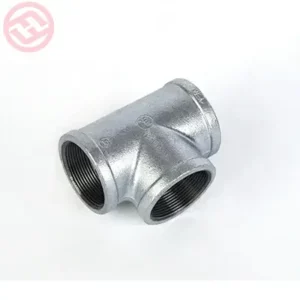The maximum and minimum operating temperatures for black iron pipe fittings depend on various factors, including the specific material composition, the applicable standards, and the type of fittings. It’s important to note that “black iron” pipe fittings are often made of either malleable iron or steel. Here are some general considerations:
Malleable Iron Pipe Fittings:
Malleable iron fittings are commonly used for threaded connections in plumbing and industrial applications. The operating temperatures for malleable iron fittings are influenced by the material’s characteristics:
- Maximum Operating Temperature: Malleable iron fittings are generally suitable for temperatures up to approximately 500°F (260°C). Beyond this temperature, malleable iron may start to lose its mechanical properties.
- Minimum Operating Temperature: There is typically no specified minimum operating temperature for malleable iron fittings. However, their behavior in extremely low temperatures may be a consideration, as malleable iron can become brittle under certain conditions.
Steel Pipe Fittings:
Some fittings referred to as “black iron” may be made of steel. Carbon steel and alloy steel fittings have different temperature considerations:
- Maximum Operating Temperature: Carbon steel fittings are commonly suitable for temperatures ranging up to approximately 800°F (427°C).black iron pipe fittings wholesale Alloy steel fittings may have higher temperature tolerances depending on the alloy.
- Minimum Operating Temperature: Similar to malleable iron, there is typically no specified minimum operating temperature for carbon steel or alloy steel fittings. However, the impact of extremely low temperatures on steel’s properties may be a consideration.
Considerations:
- Material Composition: The specific alloying elements in steel fittings can affect their temperature resistance. Consult the manufacturer’s specifications for detailed information on material composition.
- Application and Standards: Consider the specific standards and codes that apply to the application. Some industries may have more stringent requirements for temperature resistance.
- Thermal Expansion and Contraction: Consider the potential for thermal expansion and contraction, especially in applications where temperature variations are significant.
- Insulation: In applications where temperature extremes are encountered, insulation may be used to minimize heat transfer or prevent rapid cooling.
For precise information on the maximum and minimum operating temperatures of black iron pipe fittings in a specific application, it is recommended to refer to the manufacturer’s specifications and consult with industry standards and codes applicable to the intended use. Manufacturers typically provide detailed technical information to ensure proper selection and application of their products.
